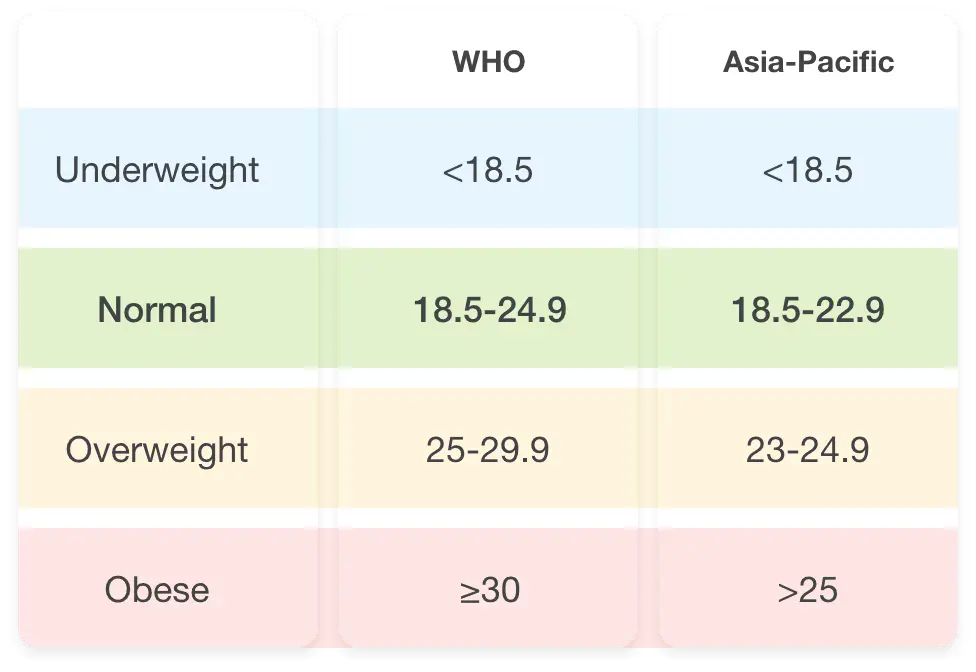Body Mass Index (BMI) Calculator
Weight (KG)
70Height (CM)
170BMI stands for Body Mass Index. It's a measure used to assess whether a person has a healthy body weight for their height. It's calculated by dividing a person's weight in kilograms by the square of their height in meters. The formula is:
BMI = weight (kg) / (height (m))^2
BMI is often used as a screening tool to assess whether an individual is underweight, normal weight, overweight, or obese.

Here are some reasons why it's commonly used and considered a good indicator, along with some limitations:
Advantages of BMI:
- Simple to Calculate: BMI is easy to calculate using a simple formula that involves only height and weight measurements.
- Widely Accepted: BMI is widely accepted and used by healthcare professionals and organizations worldwide as a standard measure for assessing weight status.
- Correlation with Health Risks: Studies have shown that higher BMI values are associated with an increased risk of various health problems, such as heart disease, type 2 diabetes, hypertension, and certain cancers. Individuals with higher BMIs are more likely to experience these health issues.
- Population Studies: BMI is valuable for population-level studies and comparisons because it provides a standardized measure that can be easily compared across different populations, age groups, and genders.
- Clinical Utility: In clinical settings, BMI is often used as an initial screening tool to identify individuals who may be at risk of weight-related health problems. It helps healthcare providers determine whether further assessment or interventions are needed.
Limitations of BMI:
- Doesn't Differentiate Between Fat and Muscle: BMI does not distinguish between fat mass and muscle mass. Therefore, individuals with high muscle mass, such as athletes or bodybuilders, may have a higher BMI even though they have low body fat percentage.
- Doesn't Account for Body Composition: BMI does not take into account the distribution of fat within the body. For example, abdominal fat (visceral fat) is more strongly associated with health risks than fat in other areas of the body. Therefore, two individuals with the same BMI may have different levels of health risk based on their body fat distribution.
- Variation Across Populations: BMI cutoffs for defining underweight, normal weight, overweight, and obesity may not be universally applicable across all populations, ethnicities, and age groups. What constitutes a healthy BMI may vary based on factors such as genetics and cultural differences.
- Doesn't Consider Other Factors: BMI does not consider other important factors that can influence health risks, such as waist circumference, diet, physical activity level, and family history of disease.
- Not Suitable for Certain Populations: BMI may not be suitable for certain populations, such as pregnant women, children, and older adults, due to physiological differences and changes in body composition.
While BMI has its limitations, it remains a valuable tool for assessing weight status and identifying individuals who may be at risk of weight-related health problems. However, it's important to interpret BMI results in conjunction with other factors and consider individual circumstances when assessing overall health and risk factors.
See Also:
3. Fixed Deposit (FD) Calculator
4. Recurring Deposit (RD) Calculator